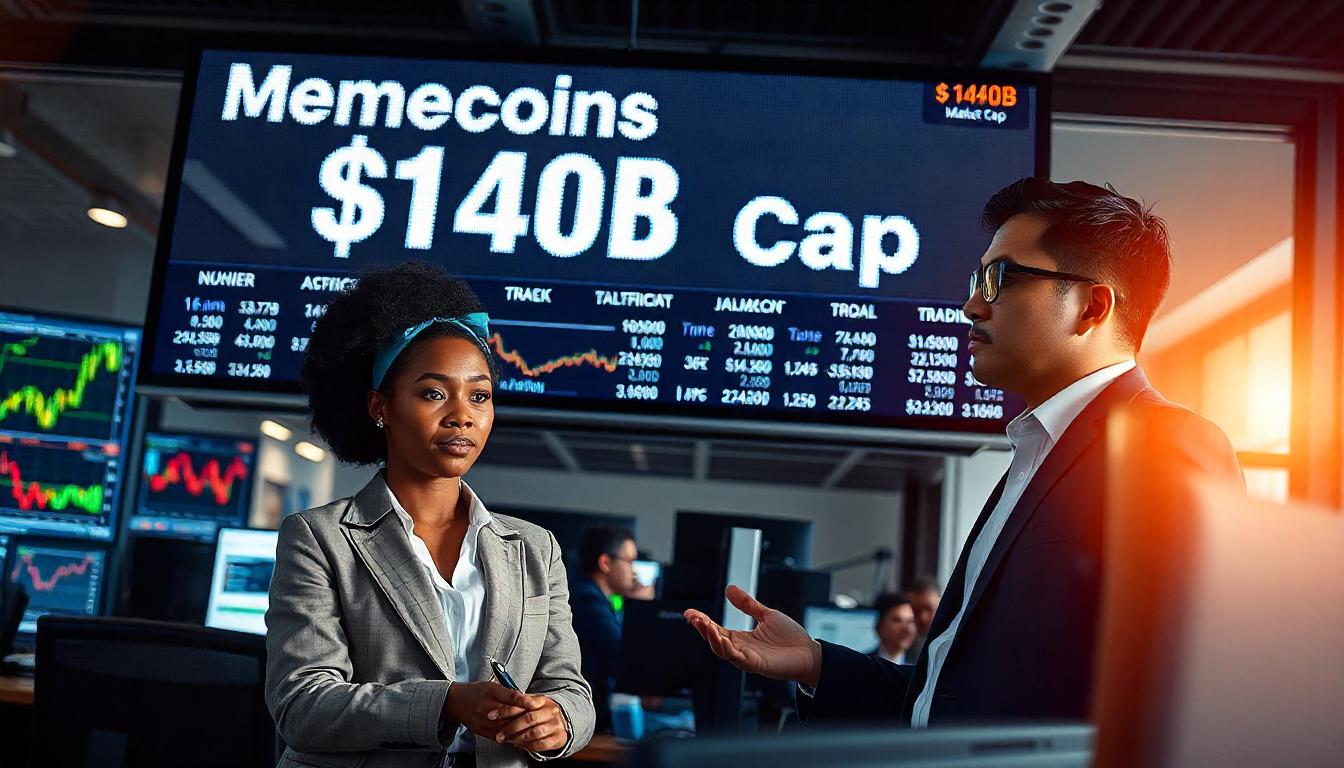Memecoins Surge to a $140 Billion Market Cap, Solidifying Their Presence in the Crypto Economy.
Memecoins have seen a dramatic rise in the crypto market, carving out a significant portion of the market’s value. As of December 1, memecoins accounted for 3.16% of the entire cryptocurrency market capitalization, a notable increase from 1.3% at the beginning of the year. When excluding Bitcoin (BTC) and Ether (ETH), memecoins made up 11.21% of the market, a substantial jump from 4.2%. This growth represents a market value exceeding $140 billion, according to CoinGecko data, in coins that are often considered to lack inherent utility.
Memecoins, including the famous Dogecoin (DOGE) and Shiba Inu (SHIB), have become notorious for their extreme volatility, often named after animals, internet memes, or viral trends. As Bitcoin breaks through the $100,000 mark, memecoins are following suit, with Dogecoin soaring 168% since Donald Trump’s election, placing it as the seventh-largest cryptocurrency by market capitalization at $64 billion.
This increase in memecoin market share has sparked speculation about whether it reflects a typical phase of a bull market or if it signals overheating in the sector. Historically, memecoins have tended to surge toward the end of post-halving bull markets, but this cycle has been different. Memecoins have gained substantial traction early, and their influence has remained strong even during Bitcoin’s mid-year price consolidation.
Dogecoin, which started as a joke in 2013, gained attention during the bull run of 2021, especially following social media promotion by Tesla CEO Elon Musk. This was followed by other dog-themed coins, such as Shiba Inu, which capitalized on Dogecoin’s popularity. Over time, the memecoin sector has evolved, becoming an investment category in its own right alongside DeFi tokens, AI-related coins, and privacy-focused assets.
However, despite their growing presence, there is still uncertainty regarding the sustainability of the memecoin trend. The sector has seen explosive growth in 2024, with a 330% increase in market capitalization from January to December. This far exceeds the growth rates of Bitcoin (140%) and Ether (71%) over the same period. Memecoin trading volume has also surged by 979%, now accounting for 5.27% of the total cryptocurrency market volume. Even during June, when other sectors faced declines, memecoins maintained high trading activity.
The rise of memecoins highlights the role of retail-driven sentiment in the crypto market, as investors flock to them as speculative assets. While they may amplify bull runs, the rapid rise in memecoin market share also poses the risk of speculative bubbles, which could shorten the duration of the overall market rally.
The memecoin market has undergone significant changes over the years. In 2021, Dogecoin and Shiba Inu dominated, but newer coins such as Dogwifhat (WIF), Brett (BRETT), Peanut the Squirrel (PNUT), and Popcat (POPCAT) have emerged, breaking into the top 100 by market cap in 2024. In addition, the focus has shifted from dog-themed tokens to cat-themed and AI-themed memecoins, which have been gaining more market share. Political memecoins also saw a boost during the U.S. elections, though their volume dropped by 80% afterward.
The platforms supporting these tokens are also evolving. While Dogecoin operates on its own proof-of-work blockchain, Ethereum-based memecoins like PEPE and TRUMP have gained attention. Solana, however, has benefited the most in 2024, with the network accounting for 30% of the memecoin market’s trading volume and 15% of its market cap. Telegram’s TON network has also seen explosive growth, with its memecoin trading volume surging by 750 times in just six months, despite still representing only 1% of the total memecoin market cap.
Looking ahead, the rise of memecoins is expected to continue shaping the crypto landscape, with further integration between launchpads and decentralized exchanges in 2025. However, heavy dependence on memecoins in ecosystems like Solana may raise concerns, potentially putting pressure on the broader development of these networks.
Share this content:













